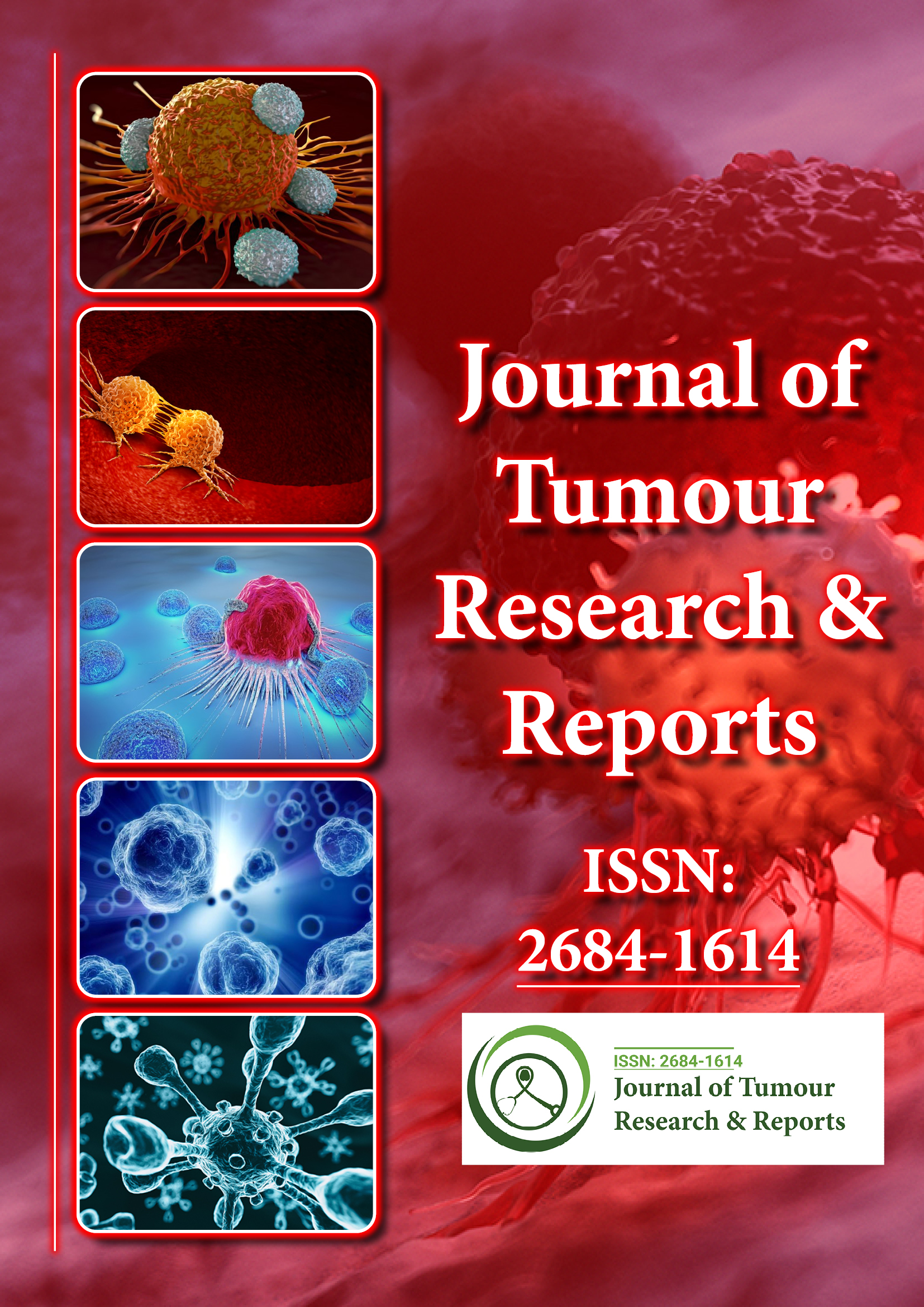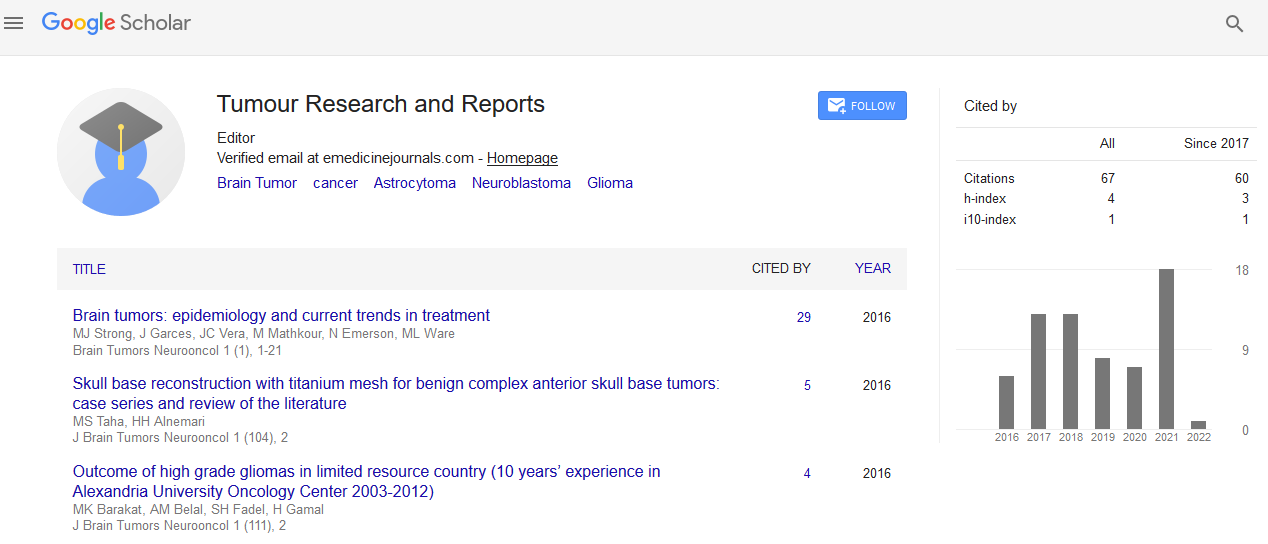Indexed In
- RefSeek
- Hamdard University
- EBSCO A-Z
- Google Scholar
Useful Links
Share This Page
Journal Flyer

Open Access Journals
- Agri and Aquaculture
- Biochemistry
- Bioinformatics & Systems Biology
- Business & Management
- Chemistry
- Clinical Sciences
- Engineering
- Food & Nutrition
- General Science
- Genetics & Molecular Biology
- Immunology & Microbiology
- Medical Sciences
- Neuroscience & Psychology
- Nursing & Health Care
- Pharmaceutical Sciences
Perspective - (2025) Volume 10, Issue 2
Genetic Instability as the Engine of Tumour Evolution
Michael Johansson*Received: 30-May-2025, Manuscript No. JTRR-25-29820; Editor assigned: 02-Jun-2025, Pre QC No. JTRR-25-29820 (PQ); Reviewed: 16-Jun-2025, QC No. JTRR-25-29820; Revised: 23-Jun-2025, Manuscript No. JTRR-25-29820 (R); Published: 30-Jun-2025, DOI: 10.35248/2684-1614.25.10.259
Description
Genetic instability lies at the heart of tumour evolution, serving as the engine that drives malignant transformation, progression, and adaptation. In healthy cells, strict mechanisms ensure the fidelity of DNA replication, repair, and division, thereby preserving genomic stability across generations. In contrast, tumour cells are characterized by a breakdown of these safeguards, resulting in frequent mutations, chromosomal rearrangements, and epigenetic alterations. This instability fuels heterogeneity within tumours, enabling cancer cells to adapt to hostile environments, evade the immune system, resist therapies, and colonize distant organs. The recognition of cancer as an evolutionary process, propelled by the relentless generation of genomic diversity, has profoundly reshaped our understanding of tumour biology, presenting both opportunities for therapeutic intervention and challenges for effective control.
Genetic instability operates at multiple biological levels, each contributing to the dynamic landscape of tumour genomes. At the nucleotide level, point mutations alter single DNA bases, changing amino acid sequences and disrupting protein function. Insertions and deletions cause frameshifts or loss of essential domains, while microsatellite instability introduces variability in repetitive sequences, destabilizing gene regulation. At the chromosomal level, the situation is even more chaotic, with large-scale alterations such as aneuploidy, duplications, deletions, and translocations disrupting gene dosage and regulatory networks. Beyond DNA sequence itself, epigenetic instability introduces additional layers of unpredictability. Changes in DNA methylation patterns, histone modifications, and chromatin structure reprogram gene expression without altering the underlying genetic code. Together, these mechanisms create a genome in constant flux, an ever-changing resource that allows tumours to experiment with survival strategies in ways normal cells cannot.
The functional consequences of this instability are most clearly seen in the disruption of tumour suppressor genes and activation of oncogenes. Genes such as TP53, BRCA1, and RB normally act as guardians of genomic integrity, halting the cell cycle or inducing apoptosis when DNA damage is detected. When such genes are inactivated, cells with damaged genomes continue to proliferate, accumulating mutations that would normally be lethal. Conversely, activating mutations in oncogenes such as RAS, MYC, or EGFR drive unchecked proliferation, metabolic reprogramming, and resistance to apoptosis. Genetic instability accelerates the accumulation of both tumour-promoting and tumour-enabling alterations, ensuring that subclones with advantageous traits are constantly emerging. This evolutionary process closely mirrors Darwinian selection, in which selective pressures exerted by the microenvironment, immune surveillance, and therapy itself sculpt the clonal composition of the tumour.
Deficiencies in DNA repair pathways represent one of the most important sources of genetic instability. The mismatch repair system, which corrects replication errors, is frequently disrupted in cancer, leading to microsatellite instability that is particularly evident in colorectal and endometrial cancers. Similarly, defects in homologous recombination repair, as seen in BRCA1- or BRCA2-mutated cancers, impair the resolution of double-strand breaks and promote chromosomal instability. These deficiencies not only accelerate tumourigenesis but also create exploitable therapeutic vulnerabilities. A prime example is the use of PARP inhibitors, which selectively kill cells deficient in homologous recombination repair by inducing synthetic lethality, a strategy that has already improved outcomes in ovarian and breast cancers.
Chromosomal instability, characterized by gains and losses of entire chromosomes or large segments, is another defining hallmark of cancer. Aneuploidy disrupts gene dosage and creates imbalances in protein expression that place stress on cellular systems. In normal cells, this chaos is often intolerable, leading to cell death, but in tumours it becomes a source of adaptability. Amplification of oncogenes located on extra chromosomes can accelerate proliferation, while deletion of tumour suppressor regions promotes unchecked growth. This instability fuels intratumour heterogeneity, ensuring that resistant clones continually emerge under the selective pressure of therapy.
Epigenetic instability adds yet another dimension of complexity. Abnormal DNA methylation and histone modification patterns alter gene expression landscapes, leading to silencing of tumour suppressors or activation of pathways that support stem-like properties, metastatic potential, and therapeutic resistance. Unlike genetic mutations, these changes are reversible, allowing tumours to rapidly shift their phenotypic states in response to environmental cues. Epigenetic plasticity often works in tandem with genetic alterations, reinforcing malignant behaviours and further complicating therapeutic approaches.
Citation: Johansson M (2025). Genetic Instability as the Engine of Tumour Evolution. J Tum Res Reports. 10:259.
Copyright: © 2025 Johansson M. This is an open-access article distributed under the terms of the Creative Commons Attribution License, which permits unrestricted use, distribution, and reproduction in any medium, provided the original author and source are credited.

